When was the last time you searched online for your name or your practice’s name?
Open a private window (also known as an incognito window) in your internet browser and do a Google search for your practice name. Make sure it’s a private window, so it doesn’t influence your search results. (Use your browser’s Help menu if you’re not sure how to do this.)
Those search results could be one of the first impressions someone has of your practice.
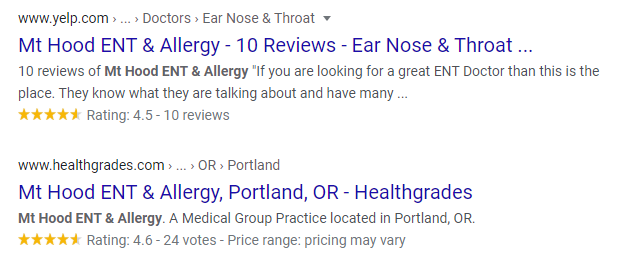
Suppose a potential patient sees your print ad and does a Google search for your practice. What they see on that first page of search results could determine whether they call your practice for an appointment.
Or suppose you’re investing time and money in nurturing referral relationships through outreach. If those potential referral partners did a Google search for your practice, what would you want them to see on that first page of search results?
What Is Online Reputation Management?
Online reputation management creates a positive perception of your practice, providers, or other key figures in your business. It’s the impression of your practice that a potential patient or referral source gleans after an online search or through other online means.
Audit Your Reputation
Before you dive into building a stronger online reputation, you need to know what your current reputation is. The easiest way to find out, as already mentioned, is to Google your practice name as well as any patient-facing members of your team — and remember to use a private window. What shows up on the first two search-result pages? What sites are displaying reviews? Are there articles or mentions about your brand on other sites?
Does your audit uncover reviews and mentions like this?
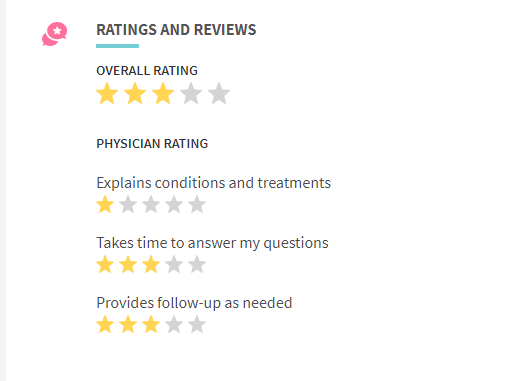
People can find your site through ways other than search engines. This kind of information can be found in Google Analytics or in Google Search Console’s Inbound Links.
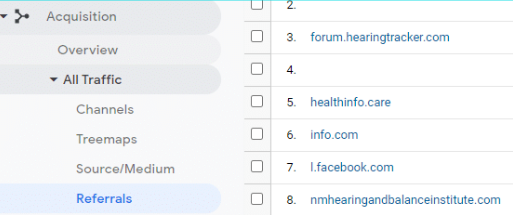
As you audit your online reputation, create a list of the sites you find your practice name on, especially the sites that have reviews of your practice.
It’s also a good idea to break out your list in terms of the four types of online media that allow you — and others — to influence your reputation:
Paid media: Paid media is any digital advertising for which you have to pay, such as Facebook ads or paid search. For the most part, you have full control of the messaging and where your ads are placed. However, if you’re running ads on platforms such as Facebook, remember that anyone can see the comments on your ad — both good and bad. Being aware of these comments is key to maintaining and controlling your brand’s message. You might not sell pizza like this example, but people can and will comment on your Facebook ads.

Earned media: Earned media refers to your unpaid brand presence on another website or media outlet; for example, a guest blog post or a local media article about an event you’re hosting.
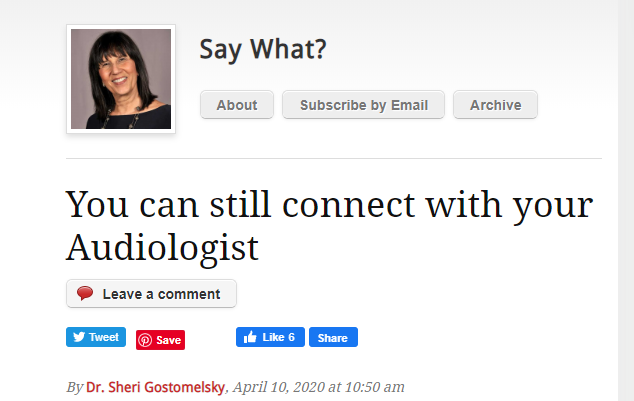
Owned media: With owned media, you have full control of the medium and the message, such as with your website and blog. Are you taking full advantage of your owned media? Boost your reputation and brand by removing stock photos from your website.
Social media and business listings: You do own these sources if you’ve claimed or set up the social channel, but you don’t have full control of the content. Other people can post reviews or post to your social channels, which will influence your online reputation.
Claim Your Business Listings and Social Channels
Your audit is done, and now you know where people have posted reviews about you or your practice. Now you need to claim all your key business listings and set up key social channels where reviews and comments can be posted about your brand.
Businesses such as landscaping or advertising typically only set up listings for the actual business. This is particularly true for a Google My Business listing. However, ENT clinics and audiology practices should consider setting up Practitioner Google My Business listings for key providers.
Before we get to our recommended listings and social media channels, a word about social media: If you don’t plan to be active on a social media channel, don’t set it up. An empty Twitter feed doesn’t look good; neither does an Instagram account with one post from four months ago. Having an empty social media channel is worse than having no presence there at all.
Here’s our list of recommended listings and social media channels to claim and set up:
- Google My Business listing
- Yelp
- HealthyHearing
- WebMD
- HealthGrades
- Vitals
- RateMDs
- ZocDoc
- Hearing Tracker
Another critical reason to claim and manage these profiles is that Google pulls in reviews from sites like HealthGrades, Facebook, and Vitals. Your claimed Google My Business listing will have not only your Google reviews but your reviews from other sites as well.
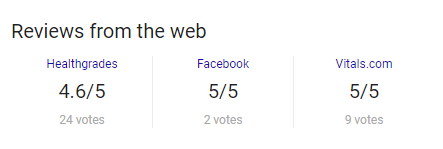
Don’t neglect employment sites like Glassdoor.com. Reviews on these sites could influence potential patients as well as future job applicants. Encourage your current employees to share their experience working at your practice.

Address Negative Reviews
45% of consumers say they’re more likely to visit a business that responds to their negative reviews.
No matter how amazing your team is, you’ll occasionally receive negative reviews. They won’t necessarily impact your business, but how you address them certainly can. Here are three ways to respond to a negative review:
Take ownership
This is not the time to get defensive. It’s important to show you understand what the problem is, the matter is important to you, and you’re sorry the patient had a problem.
Improve the future
Describe how things will be different at your practice. You don’t have to describe your course of action in detail, but you should show that the issue was taken to heart and that preventive changes were implemented.
Fix the issue with the reviewer
Offer to fix the reviewer’s complaint or issue. An example of how you could respond might be, “We truly appreciate you letting our team reach out to you to discuss what happened and find a solution.” If you don’t know who posted the review, another way to do this would be, “Providing exceptional service to our patients is our top priority. We would love to speak with you about your experience and find a solution. You can contact me/us directly at 555.555.5555.”
Tip: Are you seeing patterns in your negative reviews? Are people mentioning long wait times, inconsistent information, or messy waiting rooms? Use this information to improve patient care and patient satisfaction.
Increase Your Positive Reviews
72% of patients will look at online reviews before choosing a health care professional.
Your current negative reviews have been addressed, so now it’s time to build up your positive ones. Some patients post online reviews without having to be asked, but to see a significant increase in positive reviews across various sites, you need to ask your patients for the review.
7 out of 10 consumers will leave online reviews for a business if they’re asked to.
But how should you go about it? The key here is to ask using diverse methods and provide several options for posting a review. This is why it’s critical to claim and optimize your listings.
- Include a Review Us page on your website. Provide a link to different review sites so reviewers have options and the reviews are spread across several sites, adding more credibility to your practice.
- After someone has had a positive experience at your practice, send an email asking for an online review. If you don’t have an automated system like Audigy’s Online Review Builder, it’s critical to be 100% positive you only send these types of emails to your happiest patients.
- Create marketing materials such as posters, postcards, and tabletop cards reminding patients to leave reviews. Google offers a free tool that allows your business to easily create posters, stickers, table-tent cards, and social media posts.
- Use an Online Review Builder platform to streamline many of these processes. Building out a quality program takes time. Online review programs can automate a lot of these manual processes. There are several options available, so do your research to ensure the program you choose is HIPAA compliant.
Create Content and Become a Trusted Authority Figure
There are a lot of audiologists in this country. Your online reputation involves more than a strong online review presence. You need to provide content that positions you and your brand as a trusted authority in your profession. This differentiates you from the big-box stores as well as the ENT clinic or audiology practice just down the street.
Create a blog
How do you determine good topics to write about? Your patients and prospects will tell you! Use tools like Google Trends, Answer the Public, and Ubersuggest to see what people are searching for online. Write down common questions your patients ask in the office or on the phone. You’d be surprised how easy it is to decide on the best content for your audience.
Create videos
41% of people said social media would affect their choice of a specific doctor, hospital, or medical facility.
YouTube traffic to hospital sites has increased 119% year-over-year.
More and more people are watching videos to gather health information. In fact, one in three baby boomers says they use YouTube to learn about a product or service. The good news? You don’t have to spend money on fancy cameras or software to create and promote effective videos that showcase your services. The key thing is that your videos should provide relevant information, inform patients about you and your practice, and build trust. Ideas include:
- Welcome video on your home page that introduces you and your team
- Review of a new hearing aid product
- Instructional video on cleaning hearing aids
- Video on preventing severe allergy symptoms
A simple, but effective review of hearing aids for 2020.

There are many other places to create content and establish yourself as an authority figure. Become a guest blogger on a local media website. Answer questions on Hearing Tracker. Host live Facebook events. Consider where your audience is and plan accordingly.
Answer questions on Hearing Tracker
![]()
Monitor Your Online Presence
As an integral part of becoming more active and engaged online, you’ll need to keep an eye on your listings and social channels.
- Ensure all claimed listings and profiles are set up to send notifications to your practice.
- Set up Google Alerts for your brand name and important topics
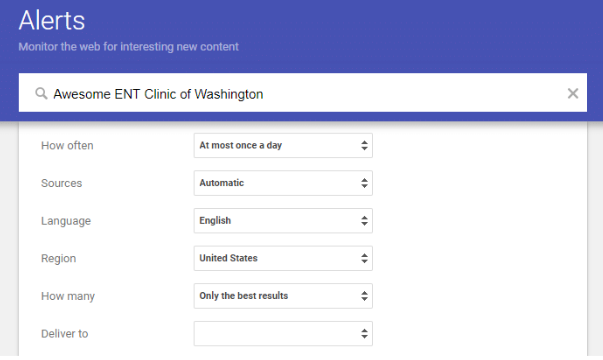
- Dedicate a team member — ideally the same person who is managing your social media channels — as the Online Reputation Captain. They will receive and review all online communications for listings, social channels, and review sites; respond to reviews (both positive and negative); and alert team members if certain situations need to be addressed.
Your brand’s online reputation can significantly impact your practice, both positively and negatively. You spend countless hours making patients happy, increasing patient flow, and establishing your practice as the go-to place in your market. By managing your online reputation, you minimize the harm of negative reviews and mentions.
If you have any questions about online reputation management, online reviews, or other digital marketing strategies, please reach out to our team with questions.

